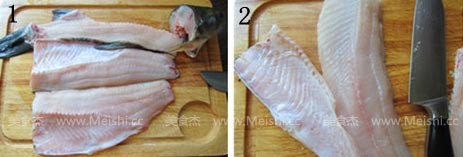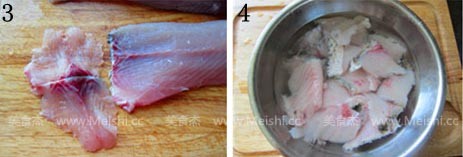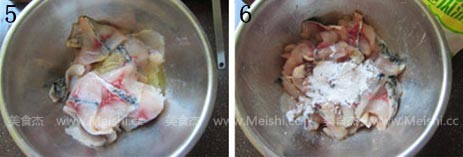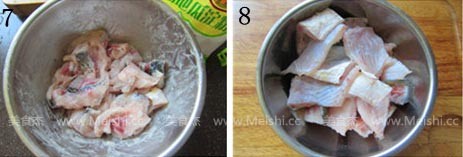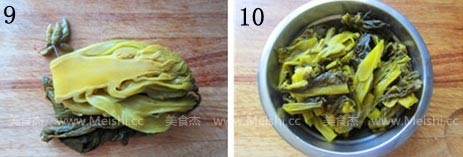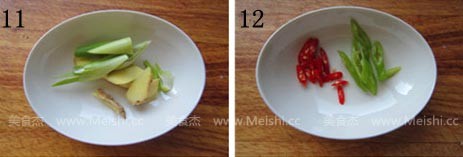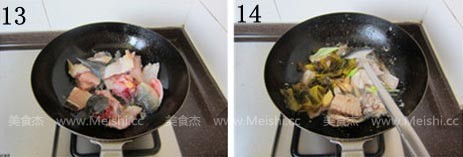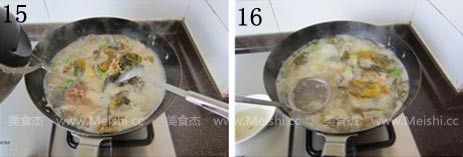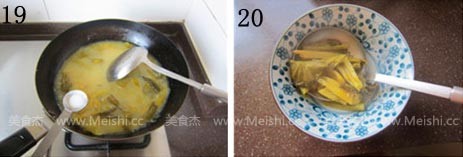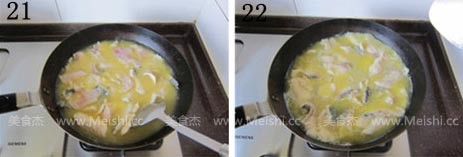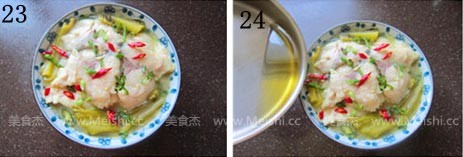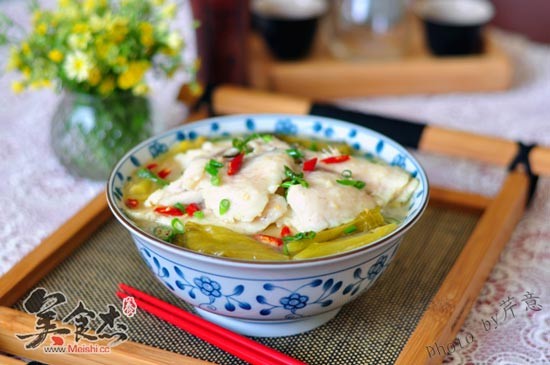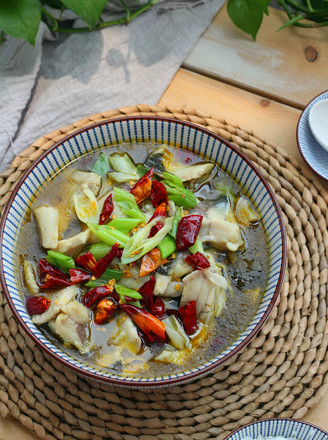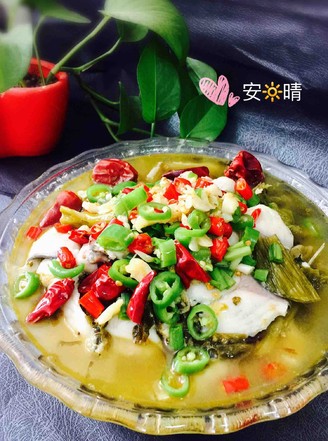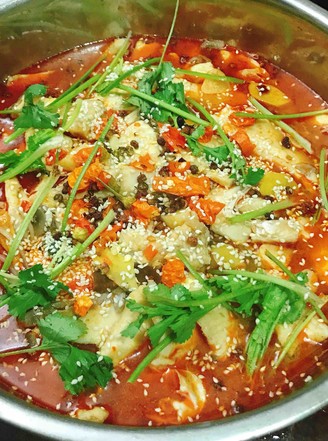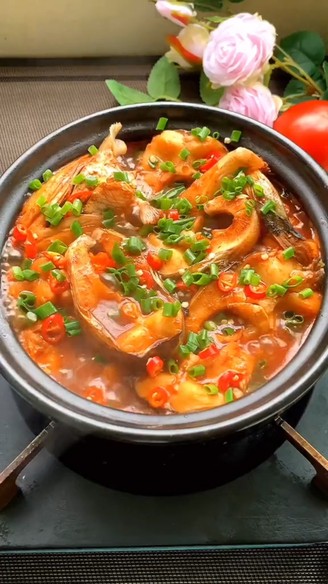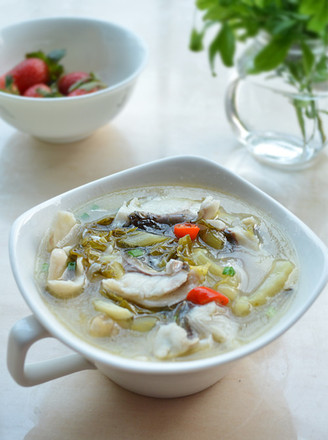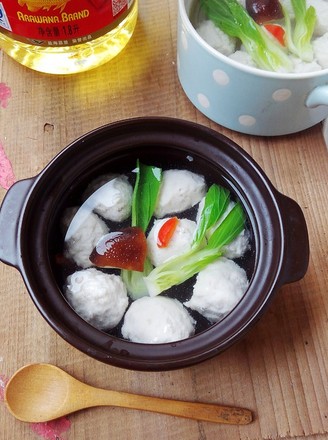Pickled Fish
1.
The grass carp is cleaned, and two large fish fillets are sliced (about 3 catties of grass carp, the meat is the most tender and the taste is the best; you can leave a part of it for something else, such as sesame fish steak)
2.
Then slice and remove the big thorns on the abdomen of the fish fillet (don't worry about the other small thorns, spit up when you eat)
3.
The texture of the fish is double-flying; (If you can’t understand the texture, hold the knife on the left and right with the tail of the fish, and move the blade diagonally toward the tail of the fish. Don’t cut the first blade to the skin of the fish, and cut the second knife. It is a double fly; the opposite is true for left-handed people. If the fish fillet is reversed, the fish fillet will be broken; the angle of the blade's inclination determines the size of the fish; the double fly can make the fish fillet larger and reduce nutrient loss; the fish fillet does not need to be too thin, too thin. Thin and fragile.)
4.
Rinse the cut fish fillets with clean water again, and drain and squeeze out the water (rinsing the fish fillets can effectively remove fishy, and the product is whiter and brighter; after rinsing, you must squeeze the water before it tastes, you can use a sterile towel or kitchen paper)
5.
Add marinade salt, sugar, cooking wine, pepper, and an egg white to the fish fillet, and grab it well (egg white can also make the fish fillet bright and tender; do not mix it with chopsticks, otherwise the fish fillet will break)
6.
Finally, add dry starch, and grab it with your hands. (Dry starch can also make the fish fillets tender and smooth. Be sure to grasp it evenly to feel sticky on your hands. Use sweet potato starch, which is sweet potato starch, to make the fish more tough. Fragile)
7.
Grab well and set aside to marinate; (If possible, try to marinate for a longer time.)
8.
The rest of the fish heads and bones are chopped into pieces, and rinsed with clean water; (especially the fish heads should be cut off in order to cook the nutrition of the fish heads.)
9.
Fish sauerkraut and pickled peppers; (usually a piece of grass carp of about 3 catties, use half a fish sauerkraut; 5 or 6 pickled sansho peppers can add a bit of spiciness; sauerkraut and pickled peppers are available in the condiment or pickle counters of general supermarkets (Buy, sauerkraut with bright blue and yellow color is of better quality, and sauerkraut with too dark color tends to be soaked for a longer time)
10.
Wash the sauerkraut and cut it into sections; (There are also recipes that say that sauerkraut should be blanched. It is certain to be clean and safe, but the sourness will be compromised, so choose your own.)
11.
Cut green onion and ginger into large pieces
12.
Cut millet pepper and green pepper diagonally into slices
13.
Start the wok, add 1 tablespoon of salad oil, heat the pan with cold oil, add the fish bones and fish heads, and stir-fry fully over high heat; (Don't be afraid of frying, you can smash it on purpose. This part is not needed at the end, we just need to Cook out their nutrition.)
14.
When the fish bones and fish heads are all over, add 1/3 of the sauerkraut, pickled peppers and green onions and ginger, continue to stir-fry on high heat to create a fragrance
15.
Add boiling water; (must be boiling water, the water will boil as soon as it hits the pot, and it is a thick white soup)
16.
Beat the foam; (There are impurities from boiled fish bones and fish heads in the foam, so don't be lazy)
17.
Continue to simmer for about 5-6 minutes. The soup becomes whiter and thicker. At this time, remove all the solids in the soup: fish bones, fish heads, green onions, sauerkraut, pickled peppers, leaving only the soup.
18.
Add the remaining 2/3 of the sauerkraut, continue to boil on high heat, and cook a strong sauerkraut aroma
19.
At this time, you can add proper amount of salt and cooking wine to season
20.
Take out the sauerkraut and spread it on the bottom of the container
21.
Filling the fish: keep the high heat and the soup boiling; start, slice by piece, quickly and evenly spread it in the pot; after filling the fish fillet, don't stir it, you can stir along the side of the pot or push the bottom (like cooking dumplings)
22.
When the soup in the pot boils slowly and the fish fillets change color, turn off the heat
23.
Pour the soup and fish fillets on the sauerkraut in the container, sprinkle with chili flakes, and add some scallions
24.
In another small pot, heat about 2 tablespoons of salad oil until it emits slightly green smoke, and "nox" on the fish fillets while it is hot


